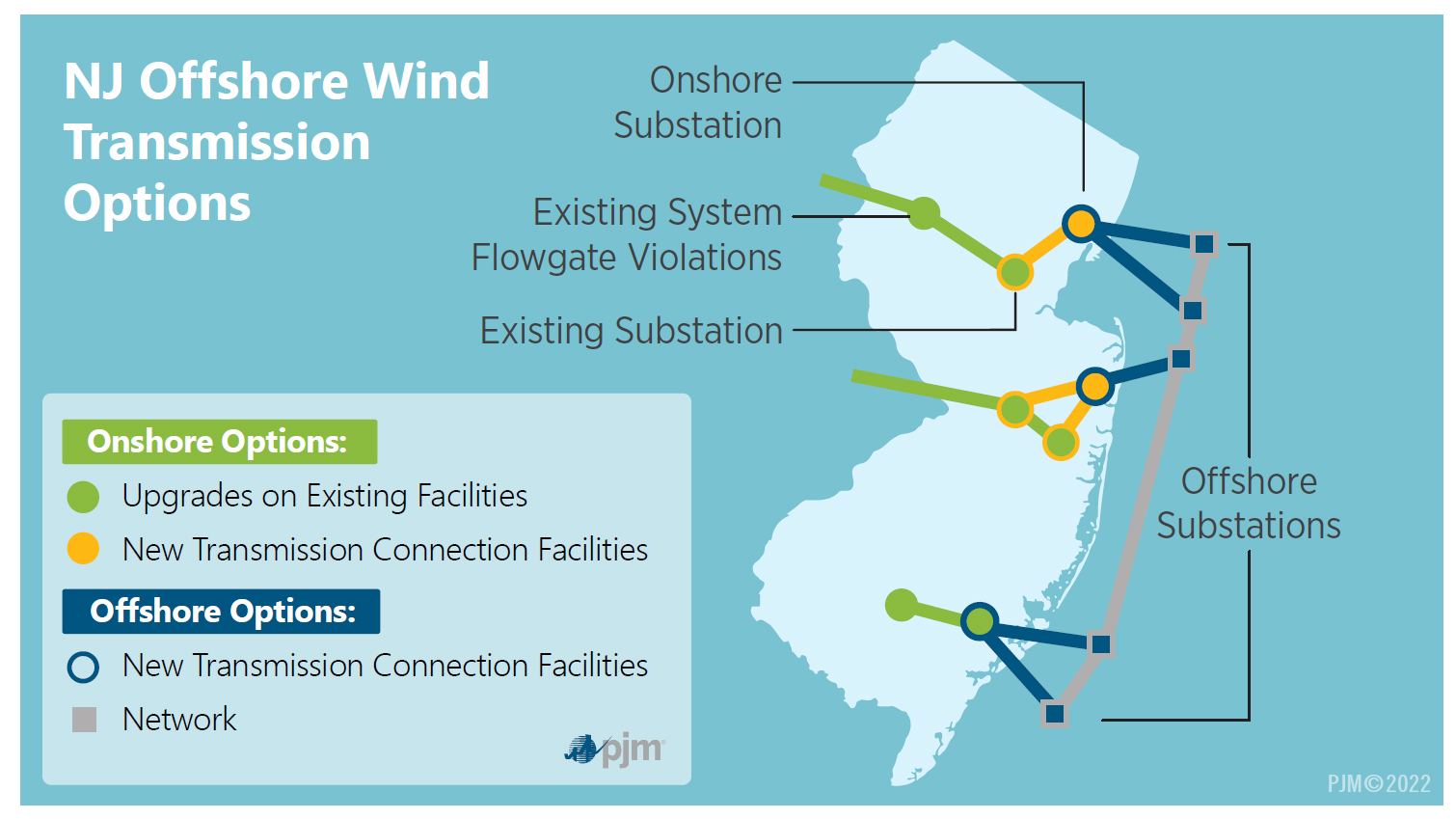Most jurisdictions in the PJM region, which spans 13 states and Washington, D.C., have some sort of renewable energy goals. This is reflected in our interconnection queue, where renewable resources and storage account for over 95% of new service requests.
As emerging trends swiftly reshape the traditional energy landscape, PJM is committed to facilitating grid decarbonization efforts, planning for the future grid that will support that transformation and fostering the innovation that will be required to make it work.
PJM Partners with New Jersey on Offshore Wind Goals

Suzanne Glatz
In PJM, which covers a large swath of the Eastern Seaboard from New Jersey down to the northern end of North Carolina, coastal states are looking to the wind power potential on the Atlantic Ocean to help solve their clean energy puzzle. PJM, as the designated planning entity, is uniquely positioned to help them find solutions, on both a regional or individual basis.
In New Jersey, for example, PJM and the New Jersey Board of Public Utilities (NJBPU) are collaborating in a groundbreaking initiative using PJM’s competitive regional planning process to advance New Jersey’s goal of delivering 7,500 MW of offshore wind generation to its residents by 2035. New Jersey requested, and the Federal Energy Regulatory Commission approved, first-time use of an existing provision in PJM’s Operating Agreement to solicit proposals envisioning the necessary transmission infrastructure to move electricity generated offshore to the existing grid. It’s the first time a state has asked to use this path — called the State Agreement Approach (SAA) — for public policy purposes, and the process could help create a model for other jurisdictions.
The provision enables a state, or group of states, to propose a project for inclusion in PJM’s Regional Transmission Expansion Plan that assists in realizing public policy requirements as long as the requesting state or group of states agrees to pay all costs of any state-selected build-out. The SAA process is complementary to the interconnection planning process and well suited to a state that is looking to accomplish a significant resource build-out over a number of years, as is the case in New Jersey. The response from developers was very robust — PJM received 80 project proposals from 13 different entities in the competitive transmission window that ran April 15 to September 17, 2021. PJM recently released the results of its initial screening of these submissions for reliability performance, economic performance, constructability, and financial aspects.
This analysis has been shared with NJBPU staff, which is performing an independent evaluation and is anticipated to present its recommendations to the BPU Commissioners in October. The BPU will make the final determination on which proposals to select, or to select none.
Changing the Power Map
New Jersey’s ambitious offshore wind goals necessitate an onshore system with the ability to accept increasingly large amounts of offshore generation. This is a change for the grid in this part of the country, a reorientation of the traditional west-east power flow. The PJM system will have a major generation source to the east — closer to the major load centers but requiring high-voltage transmission in an area dominated by low-voltage transmission infrastructure. Having offshore wind generation to the east will also increase reliability and resilience for the PJM grid, complementing the generation to the west. A schematic diagram of the future offshore wind transmission options is shown in Figure 1.

Figure 1: New Jersey Offshore Wind Transmission Options
PJM recognizes that more and more states are driving energy policy. And the states in our footprint are very different, each with their own goals and approaches to achieving those goals. The SAA provides a path for our states to facilitate the coordinated planning of the transmission facilities required to advance their specific energy goals and objectives, which may address resource development over a number of years.
PJM: Independent Industry Expert
While continuing to work with states like New Jersey individually, in October 2021 PJM published the Phase 1 results of its Offshore Wind Transmission Study, a collaborative effort with state agencies to identify transmission solutions across the PJM footprint to deliver the PJM coastal states’ anticipated offshore wind generation under multiple scenarios.
Current offshore wind policy targets among the PJM states total 14,268 MW. The study scenarios included sensitivities for injection points and capacity totals ranging from 6,416 MW to 17,016 MW of offshore wind injection under one short-term scenario modeled out to 2027, and four long-term scenarios modeled out to 2035. The study also incorporates the renewable portfolio standards of all PJM states, in order to gain a broad perspective on the ripple effects throughout the region of each state’s proposed build-out of renewable resources. By taking a holistic view of planning of its coastal states’ offshore wind deployment, PJM was able to identify transmission solutions that could present a more efficient and economic path for states to achieve their offshore wind policy objectives than if each state integrated its offshore wind generation completely independently of the others.
Through planning studies like this, PJM aims to offer its independent perspective and depth of technical expertise to enable regulators, government officials, and other industry leaders to achieve a reliable, affordable clean-energy future.
Suzanne Glatz
Director of Strategic Initiatives and Interregional Planning
PJM

Leave a Reply